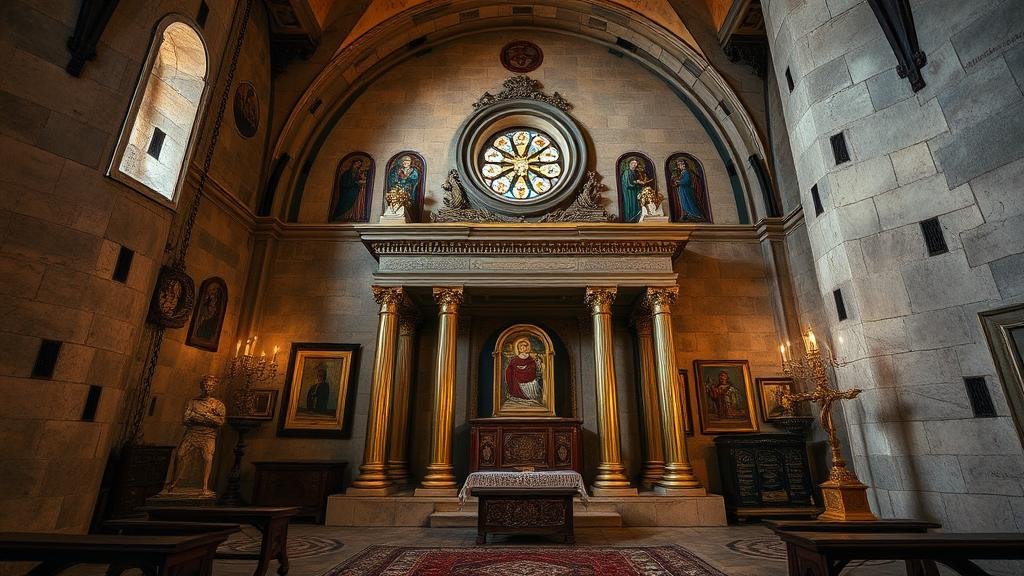Investigating the “Chapel of the Forgotten Faith,†where relics of an unknown religion reside.
Investigating the “Chapel of the Forgotten Faithâ€
Nestled in a remote valley of the Swiss Alps, the Chapel of the Forgotten Faith stands as a mysterious monument to an unknown religion. This chapel, believed to date back to the early 13th century, is filled with relics that provide a glimpse into a belief system that has long since faded from human memory. Scholars and archaeologists alike are drawn to its enigmatic structures, hoping to uncover the truths hidden within its ancient walls.
Historical Background
The Chapel of the Forgotten Faith is located near the village of Rottweil, in the canton of Vaud, Switzerland. Historical documents suggest that the chapel was established around 1220 AD, although the exact date remains uncertain due to a lack of comprehensive records from that period. The region was known for its diverse cultures and interactions between various religious sects, making it plausible that the chapel was a site of spiritual fusion.
It is hypothesized that the chapel served a dual purpose: as a place of worship and as a gathering point for religious dissenters. This ambiguity surrounding its use may have contributed to its obscurity over the centuries.
Architectural Features
Distinctively, the Chapel of the Forgotten Faith showcases a unique architectural style that blends elements from both Romanesque and Gothic designs. chapels façade is adorned with intricate carvings that depict various symbols of divinity, many of which are unidentifiable in the context of established religions.
Key architectural highlights include:
- Stained Glass Windows: These windows feature abstract designs and vibrant colors that suggest a narrative, though their meaning remains obscure. Unlike traditional biblical scenes, the imagery here is allegorical.
- Stone Altarpiece: The altar is made of local stone and is richly ornamented with carvings of unrecognizable figures, potentially representing deities or spirits revered within this unknown faith.
The Relics Within
The chapel is home to various relics that have sparked considerable interest among historians and archaeologists. Among these artifacts are:
- Scriptural Manuscripts: Recently recovered manuscripts, thought to be sacred texts, are inscribed in an unidentified script, opening a new field for linguists.
- Votive Offerings: A collection of offerings, including small carved figures and pottery, which have been dated to the 13th century, may have been used in rituals now lost to history.
Potential Insights into the Unknown Religion
Investigations into the chapels relics have led to several theories regarding the practices and beliefs of the unknown religion. One prevailing theory suggests that this faith may have been a syncretic blend of pagan practices and early Christian beliefs, a common occurrence during times of religious transition in medieval Europe.
For example, similarities have been drawn between the chapels altarpiece and those found in early Celtic Christian sites, indicating a possible shared worship of natural elements alongside devotion to a higher power. This hypothesis is supported by the presence of relics that depict nature as a symbol of divinity.
Current Research and Archaeological Efforts
Since its rediscovery in the 20th century, the Chapel of the Forgotten Faith has become a focal point for archaeological research. Research teams from various universities and institutions have been conducting excavations and studies since 2015, aiming to decode its history and the significance of its relics.
As of now, several key findings have emerged, including:
- Advanced dating techniques have revealed that the oldest artifacts date back to the 10th century.
- DNA analysis of human remains found nearby suggests a diverse group of practitioners, indicating that this faith might have had followers across different ethnic backgrounds.
Conclusion: The Quest for Understanding
The Chapel of the Forgotten Faith continues to intrigue scholars and spiritual seekers alike. As research progresses and more artifacts are recovered, the potential to uncover the rich tapestry of this unknown religion becomes increasingly tantalizing. With every new discovery, we inch closer to understanding not only the chapel itself but also the collective human experience of faith and spirituality throughout time.
In summary, the Chapel of the Forgotten Faith is a profound reminder of the diverse landscape of religious beliefs that have existed throughout history, beckoning us to explore and understand what lay hidden in the folds of time.


